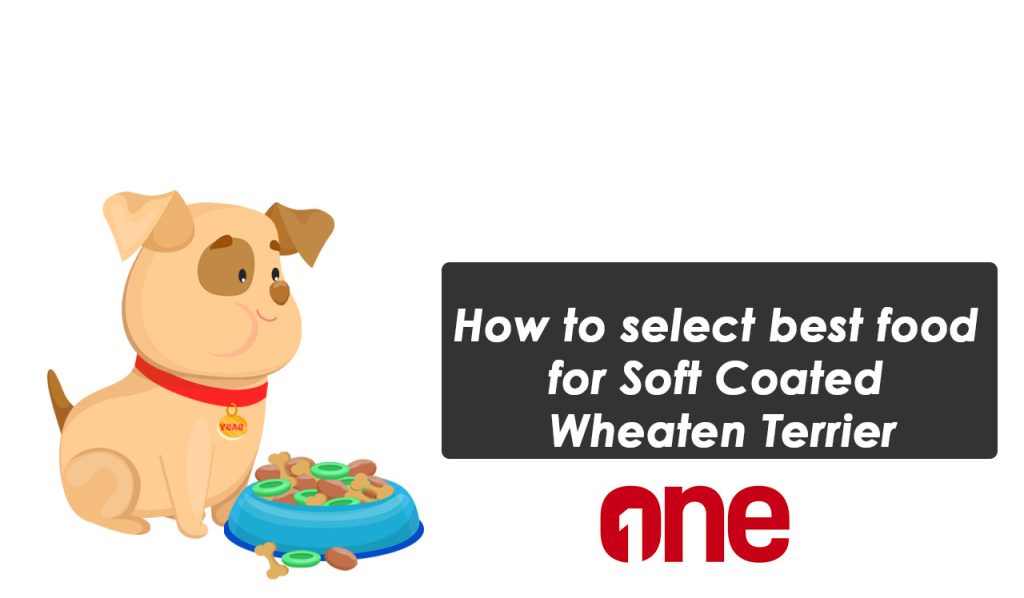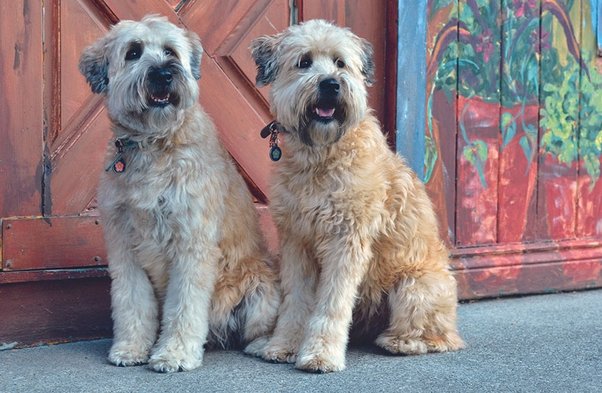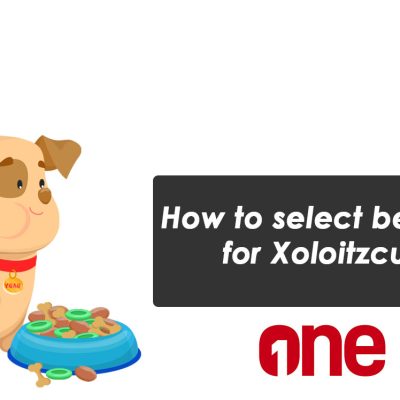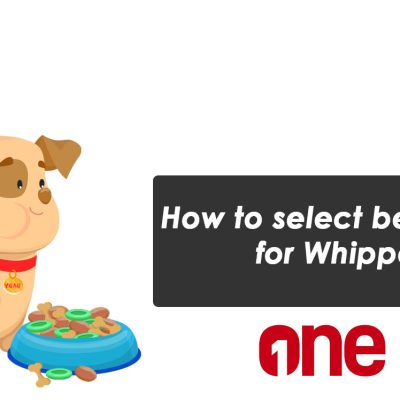
Ahoy, my fellow dog lovers! If you’re the proud owner of a Soft Coated Wheaten Terrier, you’re in for a real treat (pun intended). These fluffy, energetic pups are not only a delight to have around but also require a well-balanced diet to keep them in tip-top shape. But fear not, for I, your trusty pet caretaker extraordinaire, am here to guide you through the tangled maze of canine cuisine and help you select the most scrumptious and nutritious chow for your beloved furry companion.

Understanding the Wheaten’s Dietary Demands
Before we dive into the nitty-gritty of choosing the perfect grub, let’s take a moment to appreciate the quirks of our Wheaten pals. These bouncy bundles of joy are known for their distinct wheaten coat and boundless energy, but did you know that their dietary needs are just as unique? Unlike their couch potato cousins, Wheatens require a diet that can keep up with their high-octane lifestyle, ensuring they have enough fuel to zoom around the backyard and charm everyone they meet.
The Ingredient Showdown: Separating the Wheat from the Chaff (Pun intended!)
Now, let’s get down to business and talk about the all-important ingredients that should grace your Wheaten’s food bowl. Remember, not all dog foods are created equal, and it’s essential to know what you’re serving up to your furry friend.
- Protein Power: Lean meats like chicken, turkey, or fish should be the star of the show, providing your Wheaten with the essential amino acids needed for strong muscles and a healthy coat.
- Carb Conundrum: Complex carbohydrates from whole grains, veggies, and legumes can provide energy, but be mindful of the portions. Too many carbs can lead to a not-so-svelte Wheaten (and trust me, you don’t want to deal with a chunky pup who can’t fit through the doggy door).
- Fatty Acids for Fabulous Fur: Omega-3 and omega-6 fatty acids from sources like fish oil and flaxseed can work wonders for your pup’s skin and coat, keeping them looking their fluffy best.
- Vitamin Variety: A well-rounded mix of vitamins and minerals is essential for overall health and well-being, from strong bones to a robust immune system (because let’s face it, no one wants a sick pup moping around the house).
Dry vs. Wet: The Great Debate Continues
Ah, the age-old conundrum: dry or wet food? Both options have their pros and cons, and the decision ultimately comes down to your Wheaten’s preferences and individual needs.
Dry kibble is often more convenient and can help keep those teeth pearly white, but it’s important to ensure your pup is getting enough moisture from other sources. Wet food, on the other hand, can be more appetizing and hydrating, but it can also be messier and less cost-effective in the long run.
Why not try a mix of both? That way, your Wheaten can enjoy the best of both worlds, and you can keep mealtime interesting (because let’s face it, a bored Wheaten is a recipe for disaster).
Reading the Fine Print: Demystifying Dog Food Labels
Navigating the sea of dog food brands and labels can be overwhelming, but fear not! Here are some handy tips for decoding the fine print:
- Ingredient List: The ingredients should be listed in order of weight, so you’ll want to see real, recognizable protein sources like “chicken” or “salmon” at the top of the list, not vague terms like “meat by-products.”
- Nutritional Adequacy Statement: Look for a statement confirming that the food meets the nutritional requirements set by the Association of American Feed Control Officials (AAFCO) for your dog’s life stage.
- Expiration Date: Always check the “best by” or expiration date to ensure the food is fresh and hasn’t been sitting on the shelf for too long.
Portion Control: The Key to a Trim Wheaten
Even with the best food in the world, overfeeding can lead to an unhappy, unhealthy Wheaten. The key is to find the perfect portion size for your pup’s age, activity level, and metabolism.
As a general guideline, adult Soft Coated Wheaten Terriers typically need between 1 to 2 cups of high-quality dry food per day, divided into two meals. But every pup is unique, so it’s best to consult with your vet or follow the feeding guidelines on the food label and adjust as needed based on your Wheaten’s body condition.
Treats and Snacks: Moderation is the Spice of Life
Let’s be real, we all love to spoil our fur babies with treats and snacks. But remember, these should be given in moderation and accounted for as part of their overall daily calorie intake. Look for healthy, low-calorie options like fresh veggies, lean meats, or specialized dog treats made with wholesome ingredients.
Keeping Hydration in Check: Agua, Agua, Everywhere!
Don’t forget about the importance of fresh, clean water! Wheatens are prone to dehydration, especially during warm weather or after strenuous activities (like chasing squirrels around the yard). Make sure to provide your pup with a constant supply of cool, refreshing H2O and encourage them to drink regularly.

Conclusion
Well, there you have it, my fellow dog lovers! By following these guidelines and choosing a high-quality, balanced diet tailored to your Soft Coated Wheaten Terrier’s needs, you’ll be well on your way to ensuring your fluffy friend stays healthy, happy, and full of that signature Wheaten zest for life. Remember, a well-fed pup is a well-behaved pup (or at least, that’s what we like to tell ourselves!).
FAQs
- Can Soft Coated Wheaten Terriers eat raw food diets? While some dog owners swear by raw food diets, it’s important to consult with your veterinarian first to ensure it’s appropriate for your Wheaten’s individual needs and that you’re following proper food handling and safety protocols.
- Are Soft Coated Wheaten Terriers prone to food allergies? Like many breeds, Wheatens can be prone to food allergies or sensitivities, especially to common ingredients like beef, dairy, or wheat. If you notice any adverse reactions, consult your vet and consider trying a limited-ingredient or hypoallergenic diet.
- Can Soft Coated Wheaten Terriers eat human food? While some human foods can be given as occasional treats (like plain, cooked chicken or vegetables), it’s generally best to stick to a balanced, complete dog food formulated specifically for your Wheaten’s nutritional needs. Many human foods can be unhealthy or even dangerous for dogs.
- How often should I switch my Soft Coated Wheaten Terrier’s food? Unless your pup has specific dietary requirements or you’re introducing a new food gradually, there’s no need to constantly switch up their food. Consistency is key when it comes to their diet, as frequent changes can lead to digestive upset or picky eating habits.
- Can Soft Coated Wheaten Terriers be vegetarians or vegans? While some dog owners choose to feed their pups vegetarian or vegan diets, it’s generally not recommended for Wheatens. As a breed, they tend to thrive best on a diet that includes high-quality animal-based proteins and other nutrients that can be difficult to obtain from plant sources alone.






